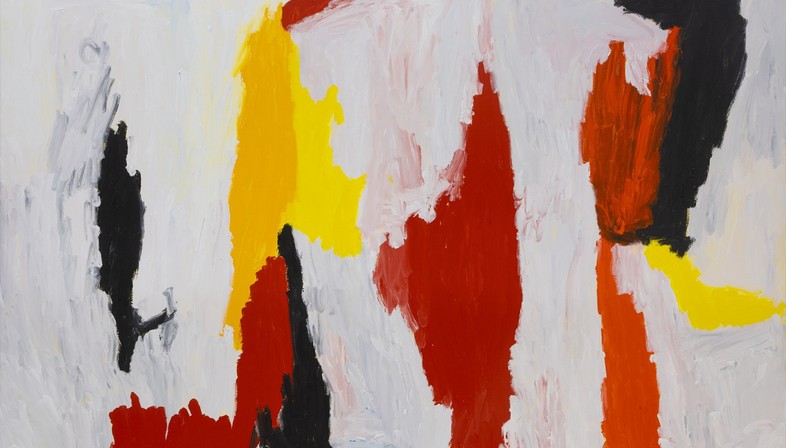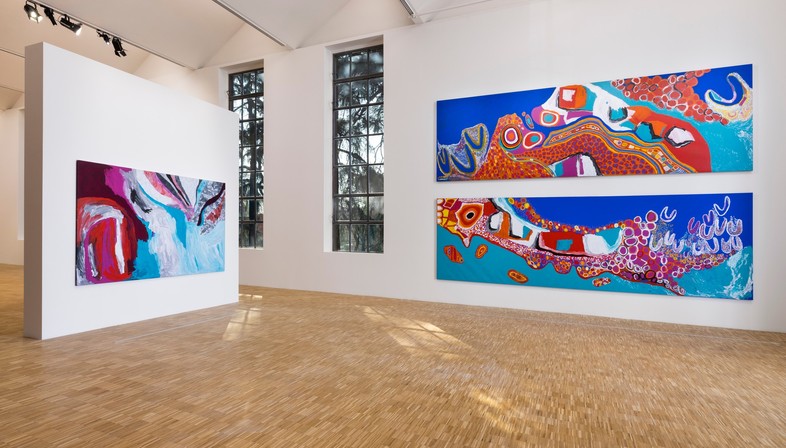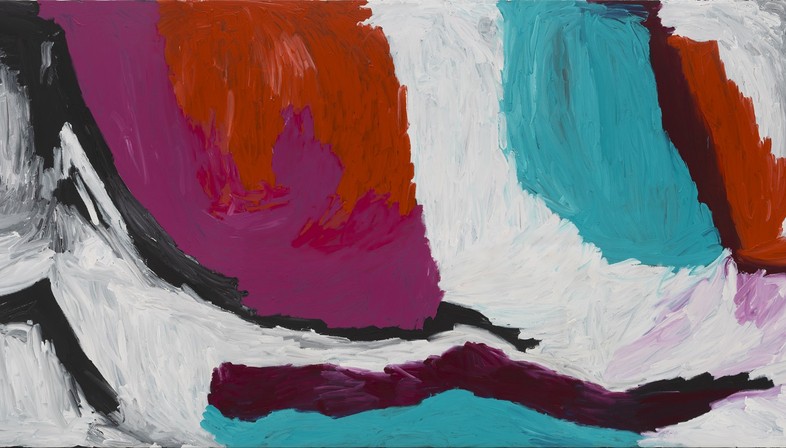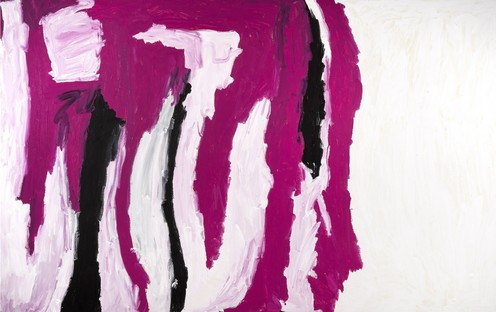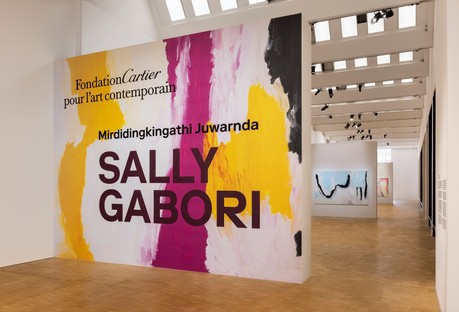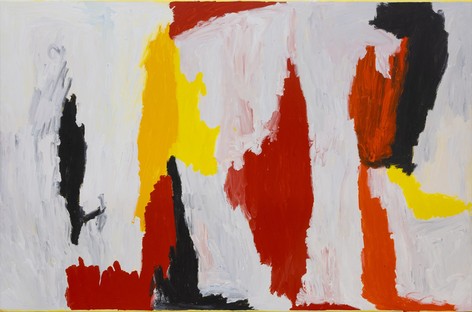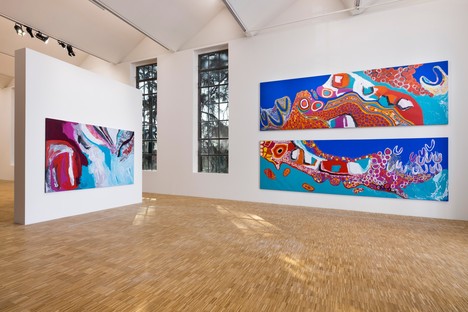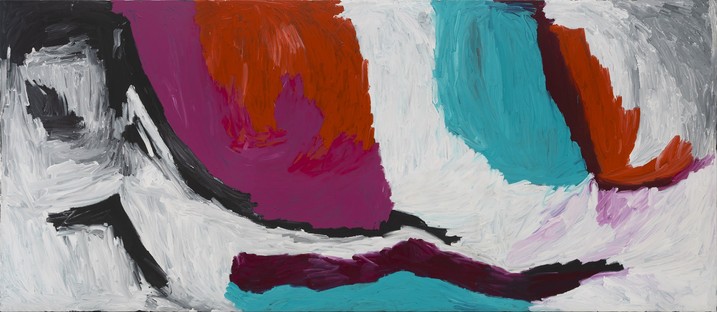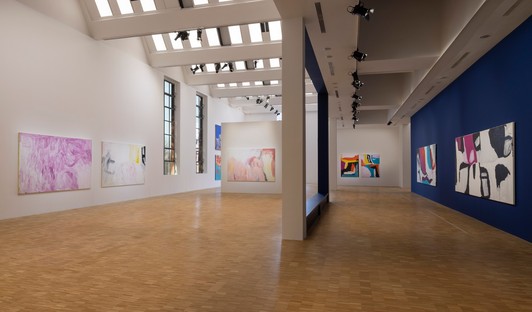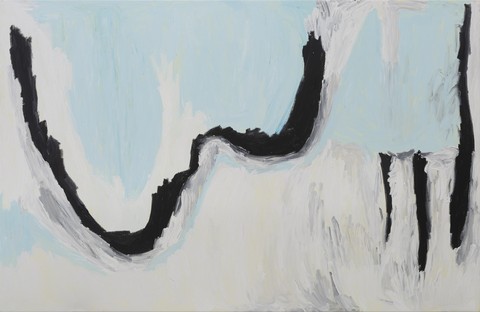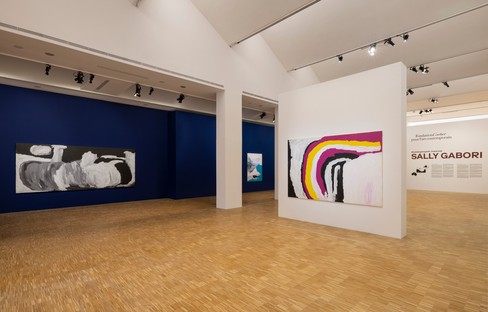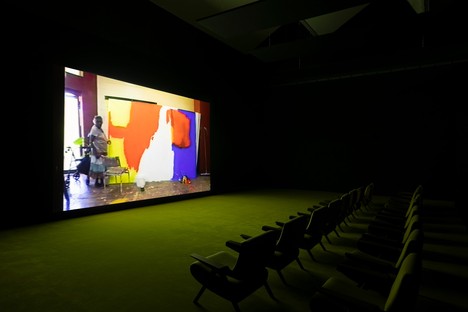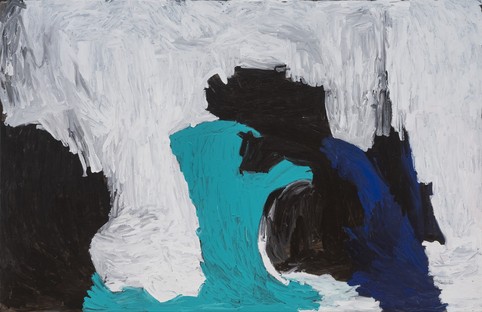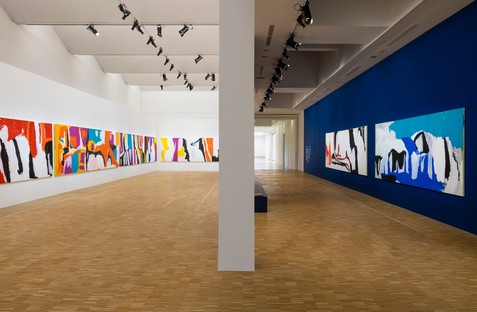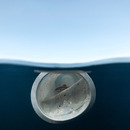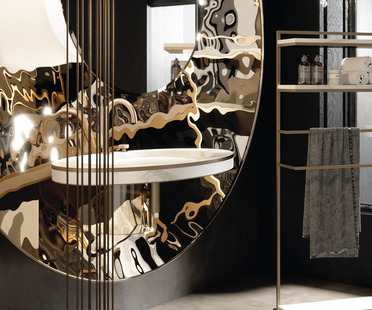
The full name of Australian painter Sally Gabori (c.1924-2015) is Mirdidingkingathi Juwarnda Sally Gabori: her first name tells where she was born (in Mirdidingki, a village on the little island of Bentinck, in the Gulf of Carpentaria on the northern coast of Australia); her second name means ‘black dolphin’ in Kaiadilt, the language of the Australian aboriginal people to whom Sally belongs. The dolphin is her totem animal, assigned at birth, as for all Kaiadilt people. Her ties with her island and nature are the spark that ignited Sally’s desire to paint: the artist and her people resisted all contact with the colonisers until 1948, when they were forced to leave Bentinck Island by a catastrophic weather event (a tidal wave and a cyclone that contaminated the island’s drinking water). Living in a Presbyterian mission on the nearby island of Mornington, Sally was unable to go back to Bentinck for decades. The pain of leaving, her nostalgia and memories found expression in her painting when she visited an art exhibition for the first time and decided to try painting herself, at the age of eighty. Her creative career lasted 9 years, from 2005 until her death in 2015, during which she produced about 2000 artworks, small canvases at first, and then large paintings measuring up to six metres in length. The Triennale in Milan hosts an exhibition open until May 14 featuring 29 Sally Gabori’s monumental paintings, in addition to three collective works produced with her daughters and other Kaiadilt artists. The initiative was undertaken by Fondation Cartier pour l’art contemporain, which promotes knowledge of indigenous art and brought Sally Gabori’s work to Europe for the first time.
“Sally is an amazing painter and for me that has always been attracting to her work”, says Bruce Johnson McLean as he walks around the vast, brightly lit exhibition halls where Gabori’s canvases are being shown. McLean, the curator of the exhibition and Head Curator of First Nations Art at the National Gallery of Australia, was one of the first to discover the phenomenon of the eighty-year-old aboriginal painter: “Going back to 2005 when Sally started painting, I was called by a local gallerist who had been running workshops in Mornington Island and worked closely with the Kaiadilt and the other communities. Then he said: “You’ve got to come and see something extraordinary”. I walked into the room, I saw thousands of paintings, I heard thousands of stories. I was completely blown away. They were unique, they were powerful, they were colourful, extraordinary. It took me a few days to absorb the impact.” Sally’s art appears abstract, but in actual fact the artist has always referred to specific locations on her island, identified in the titles of her large canvases. Thinking of those places, of the light and the sensations they called up within her, Sally transformed them into patches of bright colour and sharp, confident overlapping brushstrokes expressing all the power of her feelings and her memory. “There was no art tradition of painting in Kaiadilt culture,” explains curator Mc Lean, “So when Sally became a painter there was no ethnography to contain what she did. There was no tradition, she was unbound; she painted what she felt, what she wanted to paint. It’s pure expression. You really get the sense of that energy when you look at her work.”
The exhibition is held under a partnership between the Triennale and Fondation Cartier pour l’art contemporain, which has for a number of years been promoting initiatives to make the first nations cultures of places such as Amazonia or Australia known: “We have an obligation to care for and ensure the visibility of artists from different cultures,” says Hervé Chandès, general artistic director for the Fondation; “these peoples produce art to share the beauty of their world, to protect their land and preserve their vision”. Goals shared by Stefano Boeri, president of Triennale Milano, who says of Sally Gabori, “The dramatic, extraordinary story of a woman who was forced into exile as a climate migrant finds a very powerful means of expression in art. Not only reporting on a dramatic situation, but expressing a very strong message about the relationship between culture and nature. We now look toward indigenous cultures from many parts of the planet to understand how we can redefine our relationship with nature. We’re used to thinking of nature as something outside of us, outside of our homes and our cities, but now, voices like Gabori’s are showing us that we need a new perspective on this”.
Antonella Galli
Captions
Mirdidingkingathi Juwarnda
Sally Gabori
At the Triennale in Milan until 14 May 2023
https://www.sallygabori-fondationcartier.com/it/
Exhibition conceived and curated by Fondation Cartier pour l’art contemporain
All photographs: Courtesy of Triennale Milano and Fondation Cartier
01 Nyinyilki, 2010. Synthetic polymeric paint on linen, 196 × 303 cm. Bérengère Primat collection, by kind concession of Fondation Opale, Lens, Switzerland. Photo by Vincent Girier Dufournier
02, 04, 06, 08, 09, 11: exhibition installation in the Triennale building in Milan, photo by Andrea Rossetti
03 Dibirdibi Country, 2010. Synthetic polymeric paint on linen, 200 × 305 cm. Bérengère Primat collection, by kind concession of Fondation Opale, Lens, Switzerland. Photo by Simon Strong
05 Dibirdibi Country, 2011. Synthetic polymeric paint on linen, 198 x 455 cm. Alcaston Gallery, Melbourne, Australia. Photo by Simon Strong
07 Nyinyilki, 2010. Synthetic polymeric paint on linen, 196 × 300 cm. Private collection, Melbourne, Australia. Photo by Simon Strong
10 Nyinyilki, 2011. Synthetic polymeric paint on linen, 196 x 301 cm. Bendigo Art Gallery, Bendigo, Australia, acquired in 2016. Photo by Simon Strong










